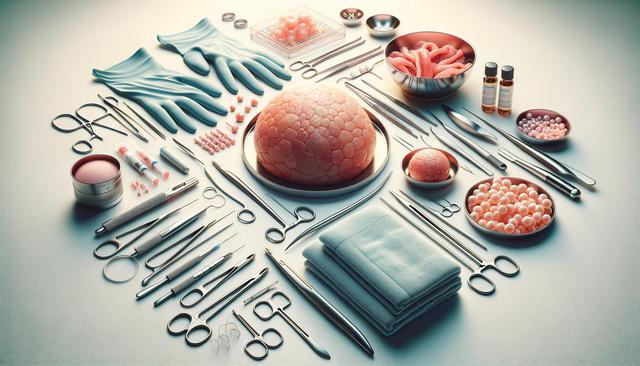
Ductal Carcinoma Surgery: What to Know About Potential Side Effects and Recovery
Understanding Ductal Carcinoma and Surgical Options
Ductal carcinoma refers to cancer that begins in the milk ducts of the breast. When detected early, especially in non-invasive forms such as Ductal Carcinoma in Situ Grade 2, treatment options often include surgery. The type of surgery recommended depends on the cancer’s stage, size, and location. Common surgical procedures for both ductal carcinoma in situ and invasive ductal carcinoma include lumpectomy and mastectomy. A lumpectomy surgery procedure focuses on removing the tumor and a small margin of surrounding tissue, aiming to preserve most of the breast. This is often followed by radiation therapy to reduce the risk of recurrence. In contrast, a mastectomy involves removing the entire breast and may be advised in more advanced or widespread cases.
Choosing the appropriate surgical approach is a collaborative decision involving the patient and their medical team. Factors such as tumor grade, genetic predisposition, and overall health all play a role. Invasive Ductal Carcinoma Treatment strategies may also combine surgery with chemotherapy, radiation, or hormone therapy. It’s essential to weigh the benefits and risks of each option carefully, including how each may affect long-term health and quality of life.
Common Side Effects After Surgery
Recovery from ductal carcinoma surgery can vary significantly, but some side effects are common across most procedures. Understanding these effects can help patients prepare physically and emotionally. Some of the typical side effects include:
- Pain or discomfort at the surgical site
- Swelling and bruising in the breast or chest area
- Numbness or changes in skin sensation
- Limited range of arm or shoulder movement
For patients undergoing a lumpectomy surgery procedure, the side effects may be less severe compared to a full mastectomy, but they can still impact daily activities for a time. Drainage tubes may be inserted temporarily to prevent fluid buildup, and bandages or surgical bras are often used for support. In certain cases, lymphedema — a swelling in the arm due to lymph node removal — may occur and requires specific management strategies such as physical therapy or compression garments.
It’s important for patients to communicate with their healthcare providers about any discomfort or unusual symptoms following surgery. Prompt reporting can help address complications early and ensure a smoother recovery process.
The Recovery Process: What to Expect
Recovery from ductal carcinoma surgery is a gradual process that differs for every individual. Whether the patient has undergone treatment for Ductal Carcinoma in Situ Grade 2 or a more advanced stage requiring Invasive Ductal Carcinoma Treatment, healing takes time. Initially, rest and limited movement are advised to allow the surgical site to heal. Most patients can expect to resume light activities within a few days to a week, depending on the procedure and their overall condition.
Follow-up appointments are essential for monitoring recovery and addressing any concerns. These visits may include:
- Wound checks and suture removal, if necessary
- Evaluation for signs of infection or complications
- Discussion about ongoing treatment such as radiation or medication
Physical therapy may be recommended to help restore arm mobility and reduce stiffness. Emotional recovery is equally important, and many individuals benefit from support groups or counseling to process the experience of cancer treatment and regain a sense of control and normalcy.
Managing Emotional and Physical Well-Being
The journey through surgery and recovery from ductal carcinoma involves not only physical healing but also emotional resilience. Patients often experience a range of emotions, from relief and gratitude to anxiety and fear of recurrence. Recognizing and addressing these feelings is an important part of overall well-being. Support can come from a variety of sources, including family, friends, counselors, and peer support groups.
Physical well-being includes managing fatigue, maintaining a balanced diet, and gradually reintroducing exercise. Techniques such as deep breathing, mindfulness, and gentle stretching can aid in this process. For those undergoing a lumpectomy surgery procedure, body image concerns may arise, and open conversations with healthcare professionals about reconstruction or prosthetics can provide helpful guidance.
Effective communication with the care team, setting realistic expectations, and being proactive in follow-up care are all key strategies to help navigate post-surgery life. Understanding that recovery is multifaceted helps patients feel more empowered as they heal.
Long-Term Outlook and Follow-Up Care
Long-term care after surgery for ductal carcinoma focuses on monitoring, maintaining health, and reducing the risk of recurrence. For individuals who have received treatment for Invasive Ductal Carcinoma or Ductal Carcinoma in Situ Grade 2, ongoing medical follow-up is vital. This typically includes regular clinical exams, mammograms, and possibly imaging tests based on the individual’s risk factors.
Depending on the pathology results and hormone receptor status, additional treatments such as hormone therapy or targeted therapies may be recommended. These therapies can span several years and require adherence to ensure their effectiveness. Patients are encouraged to maintain an open line of communication with their oncology team to adjust treatment plans as needed.
Healthy lifestyle choices also contribute significantly to long-term outcomes. These include:
- Maintaining a nutritious diet
- Engaging in regular physical activity
- Limiting alcohol consumption
- Avoiding smoking
Staying informed and involved in one’s care plan can bring reassurance and a sense of control. While the path after surgery can be challenging, many individuals continue to lead active, fulfilling lives with the right support and care.
Conclusion: Supporting Recovery Through Awareness and Preparation
Facing ductal carcinoma surgery is a significant step, whether the diagnosis involves Ductal Carcinoma in Situ Grade 2 or invasive disease. Understanding the surgical process, potential side effects, and the recovery journey equips patients and their families with the knowledge needed to make informed decisions. From the initial lumpectomy surgery procedure to long-term follow-up care, being proactive and well-prepared can ease the physical and emotional demands of treatment. With proper support and a comprehensive care plan, healing and recovery are more manageable, opening the door to renewed strength and well-being.


